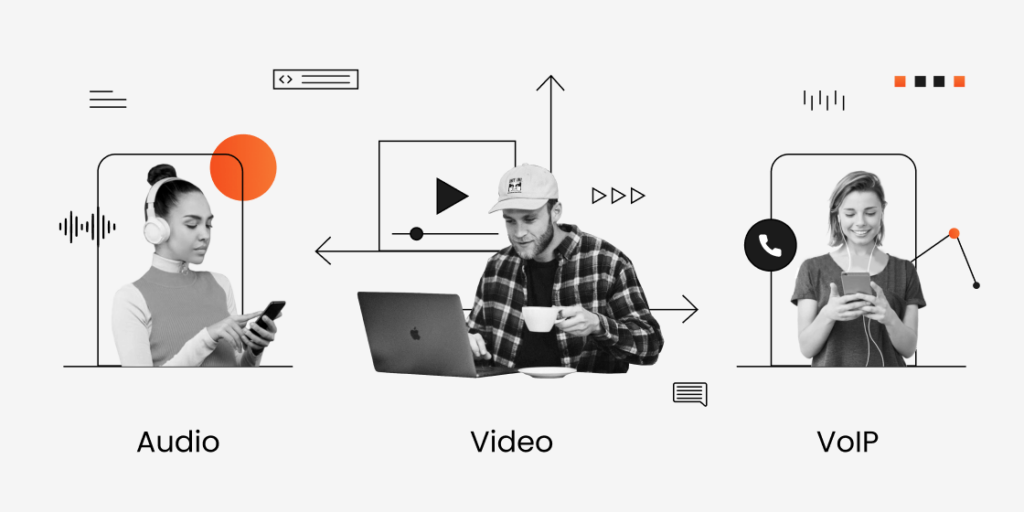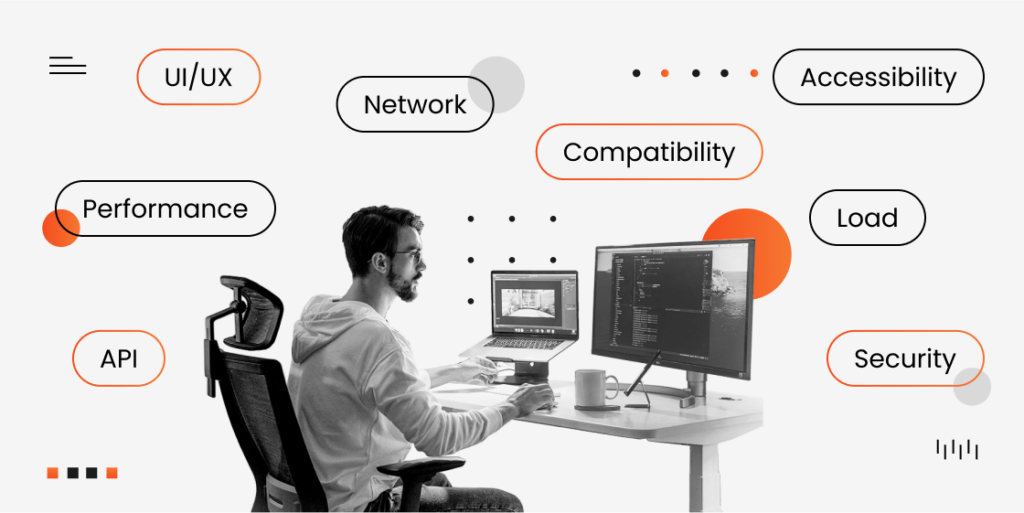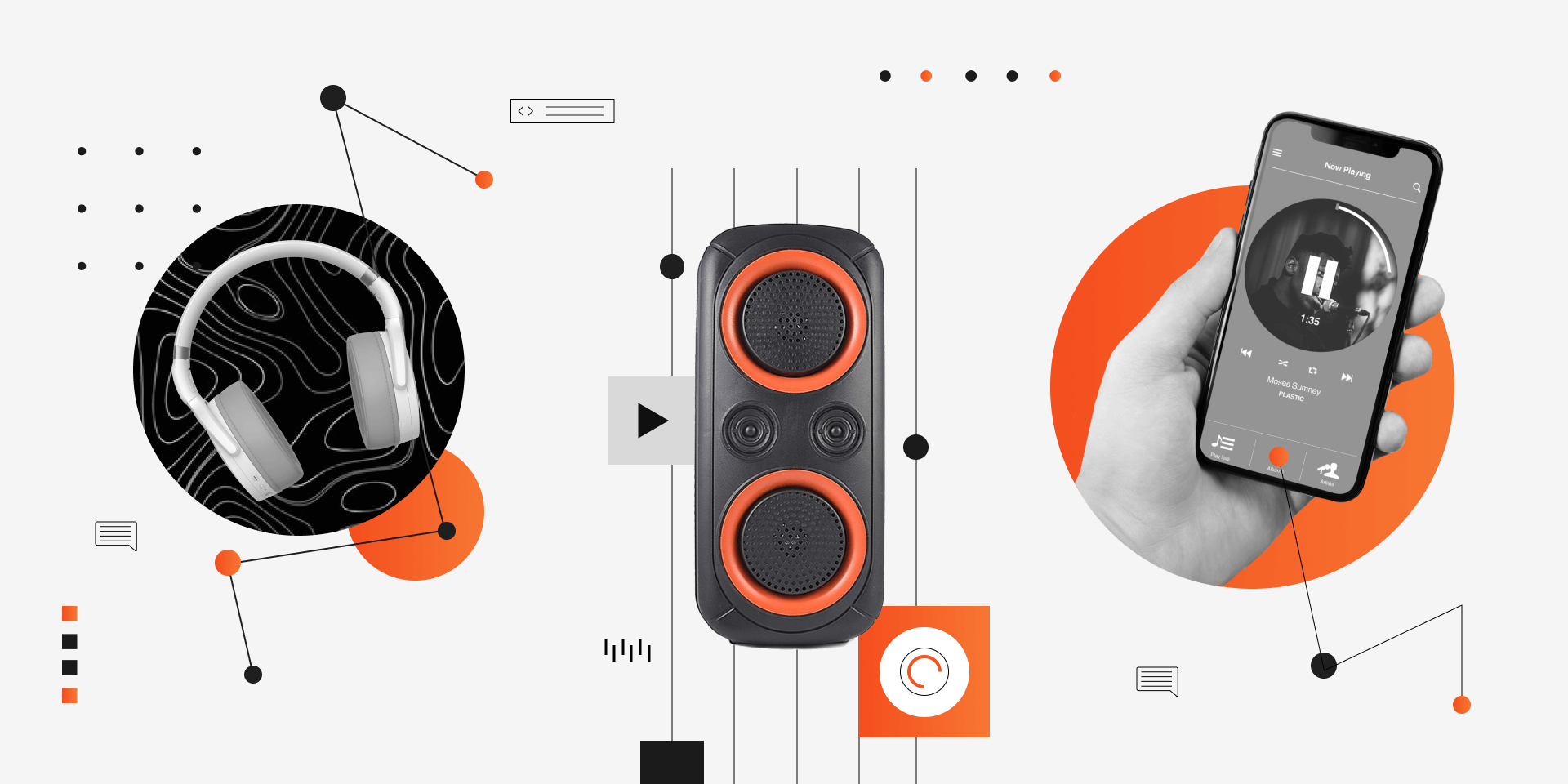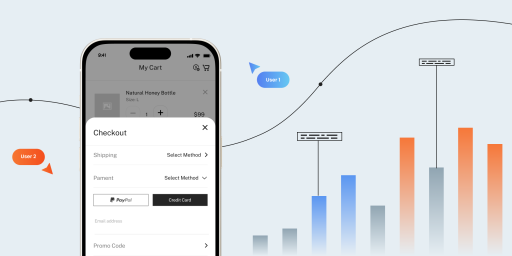Almost five years ago, the COVID-19 pandemic completely changed the business landscape for dozens of industries. For example, the eCommerce industry saw a meteoric rise, while cinemas and theaters have taken years to recover from the multiple nationwide lockdowns.
One of the industries whose rapid growth was also triggered by the coronavirus pandemic is the OTT, or Over-the-Top industry. For millions of people stuck at home for months on end, with little to no social interaction, OTT services have become the go-to entertainment channel. Subsequently, the number of available streaming services also skyrocketed, and new players are regularly unveiled.
At the same time, the quality of a streaming platform can be the one factor that makes the users fall in love with the service or eventually abandon it. In this article, we will look at what OTT testing is, why it’s needed, and what it usually includes.
Key Takeaways
- OTT industry growth accelerated during COVID-19, with users spending 485 minutes daily on media consumption, making platform quality as crucial as content quality for user retention.
- Three main OTT categories require specialized testing approaches: audio apps (Spotify, Pandora), video platforms (Netflix, Hulu), and VoIP applications (WhatsApp, Skype).
- Subscription fatigue drives users to abandon services with poor performance, making comprehensive testing essential for competitive advantage in the crowded streaming market.
- Critical testing types include UI/UX testing for user experience, performance and load testing for peak traffic, compatibility testing across multiple devices, and network testing for varying connection speeds.
- Core testing areas cover functionality, usability, platform performance, connectivity, storage systems, personalization algorithms, and secure payment processing across all supported platforms.
- Cross-platform consistency presents major challenges due to diverse device requirements, network conditions, and the need to support smartphones, tablets, Smart TVs, and gaming consoles simultaneously.
- Security and compliance testing ensures DRM protection, data encryption, and adherence to GDPR, COPPA, and DMCA regulations for global platform operations.
- Modern trends require testing for 5G network optimization, mobile-first experiences, advanced personalization features, and comprehensive localization for international markets.
The Rise of OTT Platforms
An average US user spends 485 minutes a day consuming media products, which is more time than most of us spend daily on eating, commuting, or hanging out with friends and family as busy adults. And most users will choose a subscription service based on two factors: the amount and quality of the content offered by a platform and the quality of the platform overall.
At the same time, with an increasing number of streaming platforms, users are now facing a phenomenon called subscription fatigue. While the number of streaming platforms continues to grow, it can be harder and harder for users to maintain several subscriptions at once — both due to financial reasons and to the lack of time to consume all the content available.
This is why the quality of the service is now just as important as the amount and quality of the content on offer. Therefore, media streaming testing becomes one of the most effective ways to maintain the quality of the application at the required level and make sure the product can successfully compete with other streaming services.
Developing an OTT app? Let us help with testing
What Is OTT Testing?
OTT testing, or software testing in media and entertainment, is the practice of performing software testing on an OTT media product. A typical approach to OTT testing doesn’t just include individual types of testing. All-encompassing quality assurance is required to check every single aspect of a streaming product.
Ideally, OTT application testing should be performed by two subteams dealing with manual and automated QA respectively. This allows the team to achieve the wisest use of resources while maintaining a superior quality of the product.
Types of Products and Apps Involved in OTT Testing
The OTT industry has dozens of both established and new players, but the absolute majority of them can be broken down into three categories. Here they are.
Audio Apps
These applications allow users to stream audio files using their smartphones, desktop computers, Smart TVs, or car stereo systems. The audio files may contain music, radio shows, podcasts, and more. The success of audio streaming apps depends on several factors: the amount and quality of available content, the absence of playback issues, the regular addition of new releases, the accessibility of the application on different platforms, sharing options, and more.
Examples of audio OTT apps include Spotify, Deezer, YouTube Music, TuneIn, Pandora, and more.

Video Apps
Video OTT applications are probably the most popular type of streaming apps out there. With a video OTT solution, users can stream movies, TV shows, concerts, sporting events, live video feeds, and other types of video content wherever they are. Like audio OTT applications, video streaming apps are available on different platforms, from mobile phones to Smart TVs. With an endless number of video streaming platforms, users are looking for high-quality, regularly updated content, a user-friendly interface, stable performance, and consistent operation on different platforms.
Popular examples of video OTT platforms include Netflix, Hulu, Apple TV, HBO Max, and Amazon Prime.
VoIP Apps
VoIP OTT applications are the next generation of traditional VoIP solutions, allowing users to interact via audio or video calls, as well as text chats. A good OTT VoIP application will have a convenient interface, steady performance even when the connection is not ideal, and good security with data encryption mechanisms.
Popular VoIP applications that utilize the OTT technology include WhatsApp, Skype, Viber, Facebook Messenger, and Google Duo.
Manual testing for Skype: A case study by TestFort
Why Is OTT Testing Important and Why Perform OTT Testing?
As we’ve mentioned before, given the variety and quality of OTT platforms available today, users won’t think twice before canceling their subscription after repeatedly facing playback issues or having concerns about their privacy.
And while it’s natural for streaming services to rely on the amount of content available, especially when it’s original content that costs a lot to produce, great content alone isn’t enough to both attract new users and convince the existing ones to stay. So, timely and all-encompassing OTT application testing helps increase user retention by ensuring the top-notch quality of the application and is just as important as the content the platform has to offer.
Key Types of OTT Testing
A good media streaming testing strategy is a complex and comprehensive one. The central part of the strategy is not so much about the individual types of testing as it is about the aspects of the application that need to be tested. Still, it is possible to single out a few most important types of testing that can be found in any media app testing plan. Here are the ones you cannot miss.
UI/UX Testing
The interface of a software solution is the first thing users see when they decide to give it a try and it’s something they will interact with day in and day out, provided that they decide to stick with the platform. This is why UI/UX testing should be one of the first types of testing performed on an OTT software platform. When two OTT services have a similar amount and quality of content, a good UX is often the one thing that will become the deciding factor for a user.
Performance Testing
When a user launches a streaming application, they expect a few key things: constant availability of both the platform and the content, quick response, instant switching to full-screen mode, and others. These are all the things that OTT performance testing deals with. After thorough performance testing, you will know for sure how your application will perform under different circumstances and for different users.
Load Testing
Even though popular OTT platforms offer years worth of content that users can enjoy 24/7, streaming platforms regularly face peak load periods. For example, the first season of the highest-viewed show ever on Netflix, Squid Game, scored 1.65 billion hours watched by subscribers in just 28 days. Big sporting or cultural events also draw large viewing numbers. This is why it’s important to make sure the platform is equipped to withstand peak load with load testing.
Compatibility Testing
In this day and age, an OTT product owner cannot just make the product available for one or two platforms and call it a day. A streaming service, whether it’s an audio, video, or VoIP solution, is going to be used on dozens of different platforms, from smartphones and tablets to TVs and car entertainment systems, which means thousands of different device/OS/browser/network protocol combinations. This is why it’s important to take care of wide compatibility at the development stage and perform compatibility testing throughout.
Network Testing
The OTT technology heavily relies on network stability for an engaging user experience and smooth performance. Because all the content is stored outside of the user’s device, the stream will simply not launch or will constantly go into the buffering mode in case of network problems. And although testing against every potential network problem on a single OTT QA project is hardly possible, comprehensive network testing can definitely make the product equipped to face the most common connectivity issues.

Accessibility Testing
While developing and testing an OTT solution, it’s very important to keep in mind not only the fully-abled users who, without a doubt, constitute the majority of a typical streaming service audience, but also consider people with different disabilities, especially people who are hard of hearing or visually impaired. This means testing various aspects of the app that can help such users have a better experience using the product, from adjustable font sizes to the voice-over functionality.
Security Testing
It may seem that the OTT app security approach may be different, for example, from banking or fintech applications. However, OTT software products, whether they deal with audio, video, or communication, contain plenty of sensitive information. A security breach can have catastrophic consequences for the image and market position of the product, as evidenced by Yahoo, LinkedIn, and Facebook, to name a few. Timely security testing paired with OTT automation testing can protect the app owner from many privacy-associated issues and ensure a safe environment for the users.
API Testing
The use of APIs can significantly increase the number of options for making the functionality and user experience of an app richer. With the help of an API, you can introduce any new feature, from logging into the site using various social media services to adding dozens of payment options to the site. However, since APIs are typically created by third parties, it’s vital to test the way they are integrated into the main app with API testing.
Regression Testing
Regression testing for OTT apps ensures that new updates, bug fixes, or feature additions do not disrupt existing functionality. Since OTT platforms run across multiple devices and network conditions, regression testing validates that core features like media playback, user authentication, and content streaming remain stable after changes. OTT test automation always includes regression testing, as using tools like Selenium or Appium is especially beneficial for verifying consistent performance across various platforms and configurations after any code changes.
The quality of your OTT solution is our #1 priority
What Needs to Be Tested in an OTT Application
OTT services are not created equal. They offer different functionality, are aimed at different audiences, and have different marketing strategies. However, there are a few features and parameters that can be found in pretty much any OTT application. The presence of these features helps create a comprehensive OTT application testing strategy. These are the key things that need to be tested in a new or existing audio/video streaming application.
Core Functionality
This is the one aspect of an OTT solution that can make or break the success of the product. Solid functionality — whether it’s super innovative or simply meets the expectations of the users — will be the factor that not just lures in new customers, but also motivates the existing audience to continue using the product. This is why testing the core functionality of the product is the key element of any OTT app testing testing strategy.
Usability
For a product designed for a wide audience, usability matters as much as the core functionality. No matter how many radio stations or original content your service offers, bad UX of OTT platforms will drive users away faster than you can imagine, while good UX will make users stick around. Most importantly, the product needs a user-friendly interface where every action is easy to perform. It’s also essential to check whether every element of the UI actually leads to the desired result. This is also one of the aspects of OTT application testing where manual QA is preferable to automated testing.
Platform Performance
Good performance is something most users don’t pay a lot of attention to, whereas bad performance is instantly noticeable and can significantly impact the product’s market position. There are many components to an OTT app’s performance, from how quickly the application reacts to user’s requests to how stable the playback is at any given moment. Moreover, it’s important to make sure that sudden spikes in user activity do not negatively affect the performance.
Connectivity
Connectivity is the cornerstone of the OTT technology: without a stable internet connection, a stunning interface or an impressive collection of content are not going to be worth much. And while the QA team working on a streaming application does not typically have any control over the network speed or quality on the client’s side, they need to ensure that the application does not create any obstacles that can prevent a steady internet connection.
Storage
OTT services don’t require users to download any media files to their devices, and that is one of their most appealing features. However, that means that the application is forced to rely even more on its own storage to give any number of users access to any piece of content they want. This is why storage requires special attention from the QA team. Whether you opt for your own storage solution or third-party cloud storage, this is one of the testing areas you cannot miss.
Personalization
Many industry experts believe that smart personalization is going to be the driving force of this generation’s race to the top of the OTT industry. In other words, a service that offers the most robust opportunities for content personalization and always gets it right when it comes to suggesting new content for users to check out is going to emerge as the winner in the increasingly competitive market. And only a QA team with plenty of experience with OTT products will be able to fully evaluate the personalization feature.
Payment Functionality
There are some OTT services that are monetized exclusively through ads, but they are a minority. Most platforms offer some form of subscription to give their users access to all content or an ad-free listening/watching experience. And having a paid subscription available on the site also means having a few payment methods on offer. Here, the testing team needs to focus on two important aspects: a flaw-free process of making a purchase and the uncompromised security of the payment gateway.
OTT Testing Checklist
Any OTT media testing project should be approached with a clean slate and the testing process needs to be arranged based on the specifics of the project. At the same time, OTT testing verifies similar components in different applications, so there are definitely some things OTT app testing evaluates on most projects. Here is the definitive checklist to help you test the OTT platform from A to Z.
1. Cross-Platform Testing
- Test on various devices (smartphones, tablets, desktops, smart TVs, gaming consoles).
- Verify compatibility with different OS versions (iOS, Android, Windows, macOS).
- Ensure browser compatibility (Chrome, Firefox, Safari, Edge).
- Test responsiveness for various screen resolutions and aspect ratios.
2. Performance Testing
- Conduct load testing to simulate concurrent users.
- Perform stress testing for peak traffic conditions.
- Test app performance under varying network speeds (bandwidth variability).
- Measure buffering times under low-bandwidth conditions.
3. Network Testing
- Test streaming quality over different network types (Wi-Fi, 3G, 4G, 5G).
- Simulate network failures (disconnections, slowdowns).
- Validate adaptive bitrate streaming (ABR) for automatic quality adjustments.
4. Media Playback Testing
- Verify support for various content formats (MP4, MKV, MOV, etc.).
- Test streaming protocols (HLS, MPEG-DASH).
- Validate DRM (Digital Rights Management) protection.
- Check audio-video synchronization.
5. Functional Testing
- Test user authentication (social media, email login).
- Verify subscription management (trials, renewals, cancellations).
- Validate search functionality and recommendation algorithms.
- Test navigation, content browsing, and playback controls.
- Test content download and offline viewing features.
6. Content Delivery Testing
- Test latency for content delivery across different geographic regions.
- Verify content caching for frequently accessed data.
- Check CDN (Content Delivery Network) integration for fast content delivery.
7. Accessibility Testing
- Test subtitles and captions for clarity and synchronization.
- Verify screen reader support for visually impaired users.
- Ensure proper color contrast and accessibility of UI elements.
8. Security Testing
- Verify encryption for data in transit and at rest.
- Conduct penetration testing (SQL injection, XSS, etc.).
- Test secure payment gateways and transaction handling.
- Validate API security for content and user data protection.
9. Localization Testing
- Test multilingual support for accurate translations.
- Verify localized content availability based on user region.
- Ensure geo-blocking is functioning correctly.
10. Compliance Testing
- Test for GDPR compliance (data privacy).
- Validate COPPA compliance for apps catering to children.
- Ensure DMCA compliance for copyright protection.
11. Automated Testing
- Automate UI testing using tools like Selenium or Appium.
- Automate media playback testing for repeatable scenarios.
- Set up automated regression tests for core features.
12. Analytics Testing
- Verify event tracking for user interactions (play, pause, skip, etc.).
- Test analytics for buffering times, session durations, and error tracking.
- Ensure integration with analytics platforms for performance monitoring.
From flawless functionality to an engaging UX — OTT testing makes it all possible
Best Practices for OTT Testing
OTT platform testing ensures all-around functionality, usability, compatibility, and security of a media platform. OTT testing involves not just standard testing types, but also best practices for making the process even more effective and result in an even stronger final product. Here are the key best practices to ensure that the OTT product you’re developing is release-ready:
- Test in real user environments. Mimic actual user scenarios by testing on real devices, network conditions, and user geographies to ensure accurate performance insights.
- Prioritize seamless playback. Focus on delivering smooth video and audio playback by optimizing buffering times and ensuring adaptive bitrate streaming (ABR) adjusts to varying network speeds.
- Optimize content delivery. Ensure fast, consistent content delivery through well-configured CDNs and robust caching strategies to avoid lag or interruptions in high-demand situations.
- Ensure scalability and stability. Prepare the platform for high concurrent user traffic by validating the infrastructure’s ability to scale without compromising performance during peak hours or live events.
- Emphasize security and compliance. Implement strict security protocols, such as DRM for content protection, and ensure adherence to legal regulations like GDPR and COPPA, especially for global and sensitive user data.
- Monitor analytics and error logs. Leverage analytics and error logs to monitor performance issues like dropped frames or buffering events, allowing for proactive optimization of both content and app performance.
- Prepare for device fragmentation. With the wide variety of devices used to access OTT apps, ensure that the app is thoroughly tested across different platforms, screen sizes, and resolutions to avoid UI or playback issues.
Challenges in OTT Testing and How to Overcome Them
OTT platform testing is essential for making sure the product is ready to see the world and conquer the increasingly competitive market. However, although OTT testing is critical for the success of the product, this segment of testing is not without its challenges. Here are the most common challenges in testing OTT solutions.
1. Cross-Platform Consistency
Achieving consistent functionality and user experience across multiple platforms (iOS, Android, web, smart TVs) is challenging. Each platform has its unique technical requirements, APIs, and behaviors, making cross-platform testing a necessity but also a difficult task.
2. Varying Network Conditions
OTT apps depend heavily on network performance, and users may experience fluctuating network speeds (Wi-Fi, 4G, 5G, Ethernet, etc.). Testing for seamless streaming across different bandwidths and handling low or inconsistent network conditions can be challenging.
3. Adaptive Bitrate Streaming
Adaptive bitrate (ABR) allows the video quality to change based on the user’s network conditions. Testing how the app adjusts the video bitrate dynamically, without interrupting playback or causing quality degradation, can be difficult, especially under real-world conditions.
4. High-Volume Content
OTT platforms often have extensive libraries with thousands of videos or live streams. Testing content playback, ensuring metadata accuracy, and verifying the availability and functionality of such a vast amount of media can become overwhelming.
5. Live Streaming
Testing live streaming is particularly difficult due to its real-time nature. Latency issues, buffering, stream reliability, and handling peak traffic during live events all present significant challenges in ensuring a smooth experience for viewers.
6. User Scalability
OTT apps must support millions of users, especially during popular events or new content releases. Testing for performance and scalability under high concurrent user loads using a variety of specialized testing tools is complex, and ensuring the system does not crash or degrade under such pressure is crucial.
7. Compliance and Security
OTT platforms must comply with various legal regulations like GDPR, COPPA, and DMCA, which govern data privacy, user consent, and content rights. Ensuring the app adheres to these compliance standards, while maintaining user data security, is a significant challenge, especially for global platforms.
8. Frequent Updates and Continuous Delivery
OTT apps are constantly evolving with new features, bug fixes, and content updates. This requires frequent testing across all platforms, which is difficult to manage without automated testing. Keeping up with continuous delivery pipelines while maintaining quality is a persistent challenge.
9. Localization
OTT apps often cater to a global audience, requiring content, UI, and subtitles to be localized for different languages and regions. Testing for localization accuracy, ensuring content availability, geolocation testing, and handling region-specific restrictions can be time-consuming and complex.
10. Personalization and Recommendations
Testing algorithms for personalized recommendations and search results adds another layer of difficulty. The recommendation engine needs to be evaluated for accuracy, responsiveness, and relevance, which involves validating large datasets and user preferences.
Make the quality of your app its defining feature. Find out how we can help
OTT App Trends and How to Incorporate Them in Software Testing
OTT platforms are designed to perfectly align with user expectations, and as those expectations change frequently, so do the key aspects of the OTT service. Naturally, this also impacts the testing process, as you need to take into account what users of the OTT applications have come to expect. Here are the main trends influencing software testing in the OTT segment.
Focus on User Experience
A modern user won’t tolerate a service that is lacking positive user experience — that is a simple truth of all software solutions created for a wide user audience. And the term “user experience” includes a variety of parameters, some of which may not be that obvious. For example, convenient navigation seems like a no-brainer, but it’s also important to make sure the product is working across all platforms with compatibility testing and verify the stability of the stream under any circumstances with performance testing.
Personalization Is Essential
A lot of the success of an OTT platform depends on whether the personalization feature is available at all and how well it works. When joining a new OTT service or considering sticking with the current one, users will always pay attention to content discovery — in other words, how well the system knows their preferences and how fast it can learn. Users also enjoy being surprised by an OTT service suggesting content that is outside of their typical preferences but is enjoyable nonetheless. This is why smart personalization is key to the product’s success.
Localization Matters More Than Ever
Proper localization is not just about making your product available in a foreign language. It’s also about providing location-specific payment options and currencies, offering content that the local audience is more likely to engage with, and making sure your services comply with the country’s laws and regulations. Localization testing is important because it helps you make sure you’ve done everything right.

5G Is a Game Changer
Basic calculations show that the 5G internet connection is about 100 times faster than even the fastest 4G connection. And users are just as excited about the opportunities that come with 5G as OTT services. 29% and 25% of users respectively would gladly pay more for their 5G-supported streaming subscription if it provided better video quality and reduced buffering times. This means the process of testing OTT apps should also involve testing on different network settings and speed.
Mobile Streaming Is Getting Bigger
When it comes to TV and movie streaming, Smart TVs are still the MVP of the industry. A recent report shows that Smart TV streaming demonstrated a whopping 46% growth compared to the previous year. However, with smaller screens, mobile devices are the undisputed leader in the OTT niche. Smartphones have achieved a 30% growth over the same time period. Moreover, on YouTube, mobile phones account for 63% of views. Other small-screen devices also show growth, but on a smaller scale: 15% for desktop computers and 9% for tablets. Overall, the audience of mobile users should not be left behind, and testing on various mobile devices is a surefire way to deliver an appealing, stable, and functional OTT product for smartphones and tablets.
Skilled Professionals Are Hard to Find
The OTT industry, which is expected to generate $43.97 billion in revenue by the end of 2024 with a projected growth to $54.22 billion by 2027, has a dire need of talented and experienced professionals to keep it growing at the same rate. And it’s not just about software developers, researchers, marketers, and customer support specialists. Testing, testing, and then testing some more is the only way to ensure the platform works flawlessly under any conditions.
Testing an audio OTT app with 75 million monthly listeners: Our own experience at TestFort
New OTT Hosting Options Emerge
A relatively new hosting trend in the streaming industry is cloud-based OTT hosting solutions. They have all the benefits of the cloud infrastructure, including data security, speed, and easy scalability. They are also more affordable than many of the alternative solutions. Therefore, a strong strategy for testing an OTT streaming service includes testing of the cloud infrastructure to make sure everything operates as it should.
Final Thoughts
When releasing a new OTT product into an already booming market or thinking about increasing the popularity or user retention of an existing one, OTT application testing should be one of the first items on your agenda. Timely testing is essential to ensure positive audience reception, market longevity, and easy scalability. A comprehensive testing strategy will help you take care of the most important aspects of your product, from UX and functionality to security and compliance. Don’t take any quality risks with your OTT solution — start testing today to pave your way to a successful future.
Frequently Asked Questions
 What makes OTT testing different from regular application testing?
What makes OTT testing different from regular application testing?
OTT testing requires specialized focus on media streaming, network dependency, cross-platform compatibility across Smart TVs and mobile devices, adaptive bitrate streaming, content delivery networks, DRM protection, and real-time performance under varying network conditions. Unlike traditional apps, OTT platforms must handle massive concurrent users and maintain seamless playback quality.
 Which testing types are most critical for OTT platform success?
Which testing types are most critical for OTT platform success?
Priority testing includes performance and load testing for concurrent users, compatibility testing across devices and networks, UI/UX testing for seamless navigation, network testing for different connection speeds, security testing for content protection and user data. It also includes regression testing for frequent content updates and feature releases.
 How do I test my OTT platform for peak traffic conditions?
How do I test my OTT platform for peak traffic conditions?
Conduct load testing to simulate concurrent users during popular content releases, stress testing for traffic spikes during live events, network testing under varying bandwidth conditions, and CDN testing for content delivery optimization. Use tools to simulate real-world scenarios like new season launches or live sports events.
Jump to section
Hand over your project to the pros.
Let’s talk about how we can give your project the push it needs to succeed!









